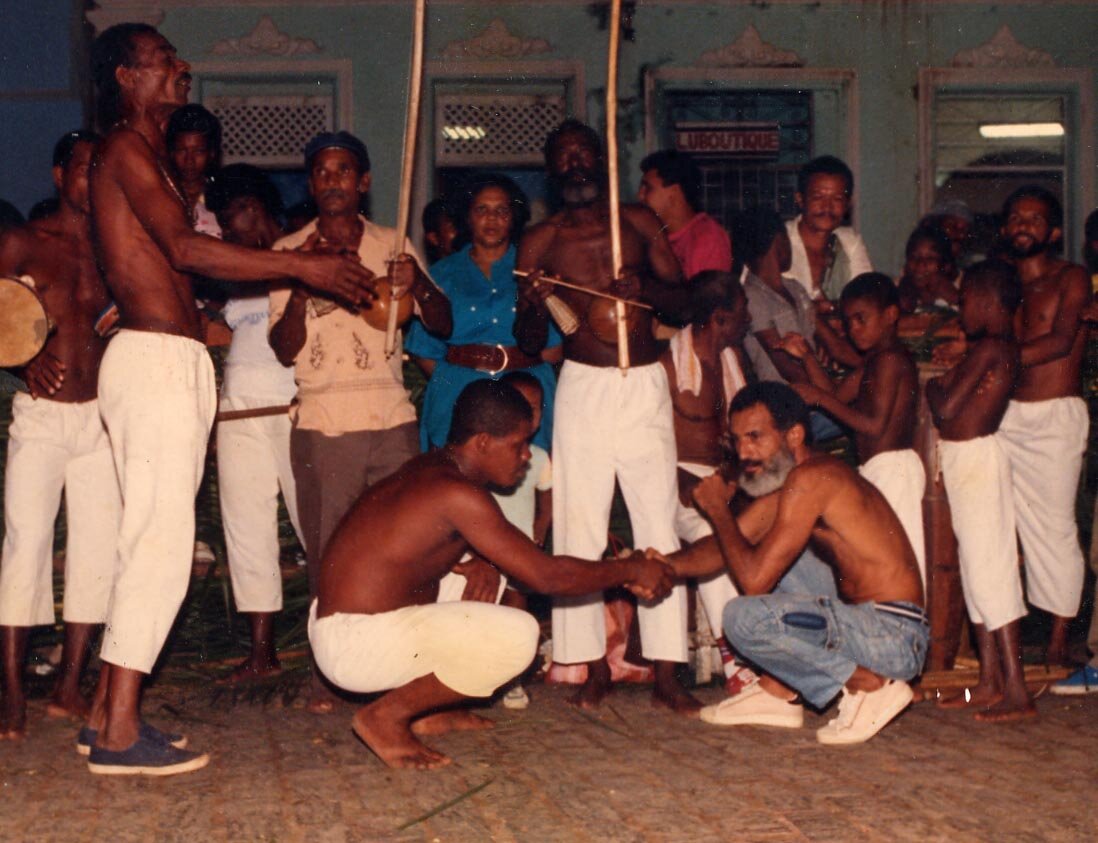
What is Capoeira?
Created by enslaved Africans in Brazil, capoeira is an art of self-defense that is hidden in dance and played as a game between 2 capoeiristas exchanging acrobatic attacks and escapes inside a roda, or circle of practitioners.
Capoeira emerged in Brazil as a means of empowerment, freedom and survival for enslaved Africans. It was practiced on colonial plantations and in quilombos, communities of free Africans and their descendants living in the backlands. Capoeira grew into a beautiful form of cultural expression that celebrates flexibility, strength, cleverness, and playfulness — a few of capoeira’s qualities that are crucial for survival and dignity in the face of oppression and marginalization.
Today, capoeira retains its playful quality. It is widely enjoyed for its aesthetic appeal as a competitive “dance.” Modern practitioners train capoeira because it is both physically and artistically fulfilling. Even more, the art draws them in with its supportive community, rich metaphors, and practical lessons.
In 2014, UNESCO recognized capoeira’s unique significance by placing it on its Representative List of the Intangible Cultural Heritage of Humanity. The capoeira community continues to grow internationally, as capoeira spreads across six continents and to millions of people worldwide.







